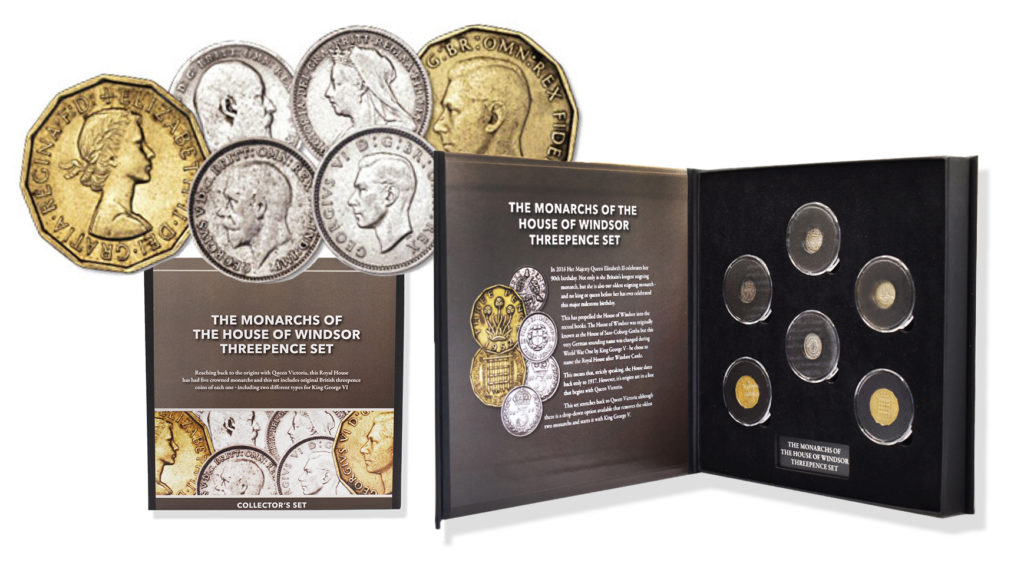
The Threepence or “Thruppence” or “Thrupenny Bit”, as it has often been referred to, is one of the most recognisable coins in British coinage. It has a long history, with many different monarch’s portraits adorning its obverse, and numerous different designs to its reverse. Here we specifically take a look at the coin from the reign of Queen Victoria through to it ceasing to become legal tender due to Decimalisation in 1971.
Victorian Times
For Queen Victoria, the silver threepence was struck in virtually every year of her long reign. The portrait on the coins changed from the Young Head, to the Jubilee, to the Veiled Portrait, as her reign progressed, but the reverse of the coin remained the same. A crowned “3” with the year date split on either side of it.
Her son Edward VII adopted the same design, as did George V, until the year 1927 when the design on the reverse eventually changed. Previously a crowned “3”, the new design now featured three acorns and three oak leaves.
A New Design
In 1937 there were three different threepences that were issued simultaneously. For George VI a new design of silver threepence was introduced, with the reverse design of a shield bearing St. George’s cross in the centre. Maundy Money threepence’s however, were still minted with the old design of a crowned “3” on them.
Due to the threepence beginning to prove unpopular in England, with people thinking it was too fiddly, a new brass nickel threepence was released and this was the most notable design difference as it was the UK’s first dodecagonal (12 sided) coin.
It received a mixed reception from the public, but soon became one of the nation’s most loved coins due to its quirky nature. It was also easy to spot in your change at the time, as it was yellow in appearance and, due to its shape, bulkier than its silver predecessor.
The design for the reverse of this new brass nickel threepence was that of the “thrift plant”, sometimes known as a “sea-pink”. It was based on a design for the old silver threepence, by Miss Frances Madge Kitchener. This design remained on the reverse of the threepence until the end of George VI’s reign in 1952.
The Dawn of Decimalisation
For Her Majesty Queen Elizabeth II, the obverse of the threepence showed her first coinage portrait and the design on the reverse changed to a crowned portcullis, which was a badge of Henry VII.
The last currency threepence’s issued were dated 1967. “Decimal Day” on the 15th February 1971 brought about the end of pounds, shillings and pence that had been used for over a thousand years, and the brass threepence ceased to be legal tender on the 31st August 1971. The threepence has now not been seen in circulation for nearly 50 years, but its shape is echoed in the current pound coin, proving just how popular the design remains.
The threepence’s that we have mentioned here of Queen Victoria, Edward VII, George V, George VI and Elizabeth II are all available in one beautiful collection, “The Monarchs of the House of Windsor Threepence Set”, which you can purchase HERE.
